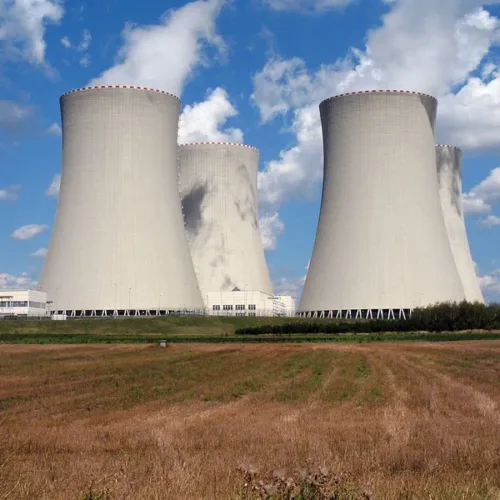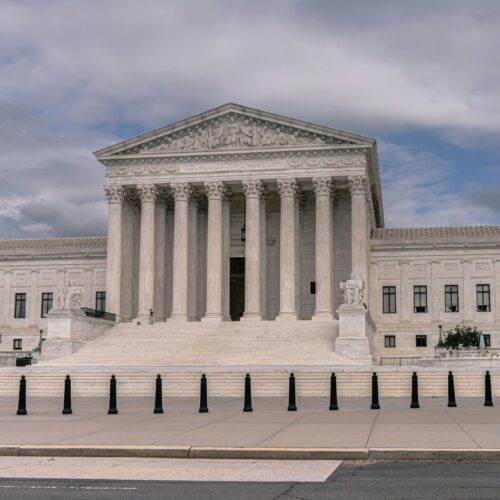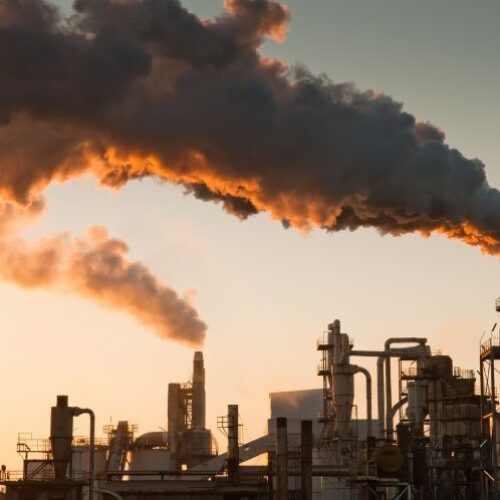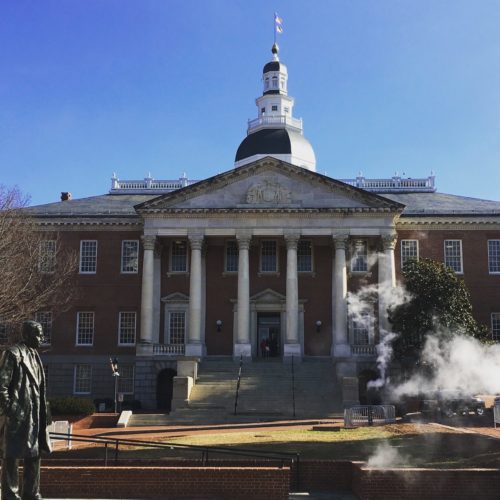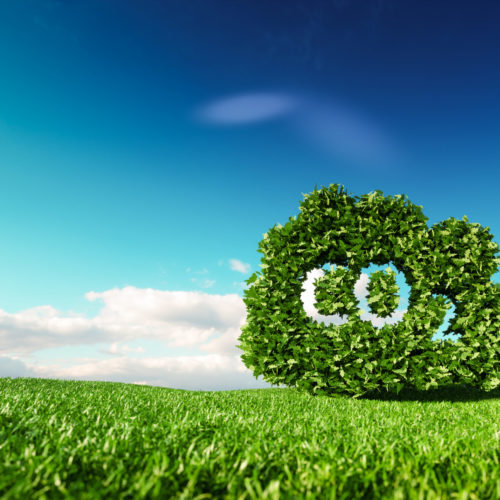Podcast: Maine’s first-in-the-nation packaging recycling law reflects growing momentum for “producer responsibility” legislation

Credit: Canva
Transcript:
For most Americans, the familiar sound of the recycling trucks on pickup day is a routine part of life. But in many towns, recycling programs are struggling.
“People have been told for decades now that recycling is a really important thing they can do to help protect the planet and clean up the environment. So people get very frustrated when they go to their local transfer station and find out that there isn’t a way to recycle something,” said Maine state Representative Nicole Grohoski.
Last month, I caught up with Representative Grohoski, who is on a mission to revitalize recycling.
For many programs, the problems started in 2018, when China stopped importing recyclables from the United States. In Maine, rising costs for recycling have led some programs to send packaging waste to landfills or incinerators. Grohoski said that taxpayers shouldn’t be saddled with the costs of managing packaging waste.
“Because they have no say over how much packaging comes on the products they’re interested in buying and what it’s made out of,” said Grohoski.
Last July, Governor Janet Mills signed a bill Grohoski sponsored (LD 1541), making Maine the first state to require producers to pay for the cost of managing the packaging waste associated with the products they sell.
“So this law puts the burden on corporations to be responsible for the cost of disposing of packaging, and also gives them a financial incentive to make less packaging and better packaging in the first place,” said Grohoski.
It’s based on the concept of Extended Producer Responsibility, which holds that producers should bear the environmental costs associated with their products throughout their lifecycles. Maine is unique in that it’s the only state with a framework in place requiring environmental officials to identify products for a producer responsibility approach. There are nine such other laws on the books covering products including electronics, batteries, paint and carpets. Back in 2019, state environmental officials had identified packaging waste as ripe for a producer responsibility program.
Under the new law, manufacturers will pay into a fund annually based on the weight of their products sold into a state.
“These are brand owners, companies like Amazon, Walmart, Proctor and Gamble, Kimberly Clark,” said Sarah Nichols, the sustainable Maine director at the Natural Resources Council of Maine. Nichols described a system that wasn’t working: currently, it costs two-thirds more to recycle packaging than to toss it in a landfill.
“Transformative is the perfect word for this type of law,” said Nichols. “You know, I always use this example describing why I think this works, and it involves my kids. I have two children and they’re very messy – they’re young boys. And as soon as they got old enough I expected them to clean up their own messes — and low and behold, there’s less mess in the first place because they know that they’re the ones who have to pick it up, and not me. So it’s the same idea here.”
But Nichols said that some industry players weren’t so keen about the legislation. Critics warned that an EPR system would raise costs for consumer products. But Nichols said those claims weren’t backed by data from other successful programs.
“What we’ve observed in all of these dozens of other jurisdictions that have an EPR for packaging program in place that there is zero correlation between EPR for packaging programs and the cost of goods in that jurisdiction,” she said.
In fact, data compiled over the years from programs around the world helped inform Maine’s effort. Germany was the first country to implement EPR for packaging, back in 1991, and by 2024, every EU member country will be required to have a program. A few Canadian provinces have also embraced various versions of the policy. Here’s Grohoski.
“Just right here in Maine we have Québec, which is a neighboring province. They are able to offer 99 percent of their residents curbside recycling, and they certainly have rural areas like we do in Maine. And they are paying less per capita than we are paying right now through our current inefficient system for their program, and getting twice the recovery rate.”
Québec’s EPR program for packaging is the oldest in Canada. It was launched in 2005. I reached out to Philippe Cantin, who is vice president of government affairs and public relations at Éco Enterprises Québec, the quasi-government agency that manages the program, to ask him about some of those impressive numbers.
“Nearly every household has curbside pickup – is that correct?” I asked him.
“That’s correct,” he said. “Ninety-nine percent of households in Québec have access to curbside pickup, and honestly, the ones who don’t are usually not accessible by road.”
But Cantin says there is room for improvement – for better consumer education, and for investments in infrastructure and end markets to encourage more circularity – so that the processed materials make their way back into new products and not a landfill. Currently, municipalities manage collection, transportation, and sorting of recyclables, but they don’t have any say about what happens to them next.
“Whatever happens after the sorting stage is not for them to have visibility on because their contracts don’t allow them to see what’s going to happen beyond [that]. The material could go to Asia, could go elsewhere, could be landfilled. [It’s] very difficult for them to have any leverage on what happens afterwards.”
Currently, Québec’s program is undergoing reform to give the 1,700 producers who pay into it more control over how the system is run, and to also establish performance targets for collection and recycling. The hope is to create greater efficiencies, and to also give manufacturers more access to the recycled content, to encourage its use in new products.
“Right now it always goes to the highest bidder,” said Cantin. [If] the highest bidder is overseas, there’s not much that manufacturers can do right now but just see that the material is shipped overseas. In this case we can change that, if manufacturers want to have access to the materials first because they’re being collected in the provinces that they market products in.”
The reform also aims to harmonize the collection system among the province’s nearly 1,000 municipalities. Collectively, they have 500 different recycling contracts that don’t always collect the same products. The plan is to have uniformity and encourage economies of scale among the province’s municipal recycling facilities.
Québec’s experience could be instructive for the growing number of U.S. states that are considering implementing their own programs.
Last year, about a month after Maine’s law was enacted, Oregon became the second state to approve EPR packaging legislation. The details are slightly different, but the concept is the same. Currently, the Maryland legislature is considering another EPR bill, one that would give a greater role to manufacturers.
I asked Cantin what advice he would offer officials as they move forward.
“Think beyond just making sure to secure the budgets for recycling,” he said. “Make sure that your piece of regulation or piece of legislation truly enables circular economy and helps the private sector — who’s the key player in this process — have the actual leverage that they’re looking for to make the system work,” he said.
This summer, Maine environmental officials will launch an 18-month stakeholder process to work out the details of their program.
Representative Grohoski said that, among other things, she’s looking forward to getting new data about what’s actually in Mainers’ trash and how much more of it could be collected and recycled compared to now.
“One of the most exciting pieces of this bill in my mind is just getting information about where we are, and then we can set really solid benchmarks going forward from that information.”
Basically, to build a recycling system that truly benefits taxpayers, and the environment.
***
Related Resources:
About Maine’s EPR Law for Packaging:
The law requires producers of products to pay into a fund based on the net amount of packaging sold into the state, and take into account toxicity and whether the packaging is readily recyclable. The idea is to provide incentives for producers to choose more recyclable packaging and use less packaging. The funds will be used to reimburse municipalities for eligible recycling and waste management costs, make investments in recycling infrastructure, and provide education to Maine citizens about recycling.
The program will be operated by a stewardship organization that will be selected by the Maine Department of Environmental Protection following a competitive bidding process. The organization will operate the program, with the oversight of the DEP. Costs to fund the organization and DEP oversight will be funded by producer payments.
More information is available on the DEP website here.
An explainer on Maine’s law is available from the Natural Resources Council of Maine here.
